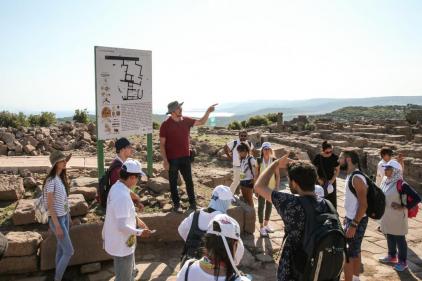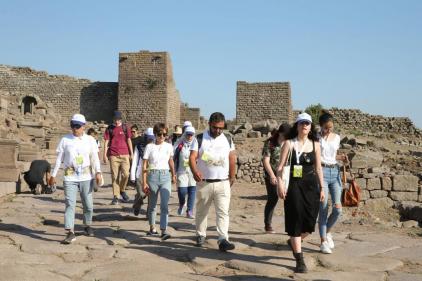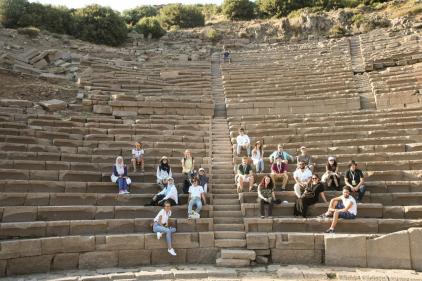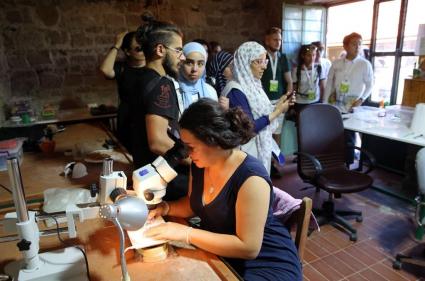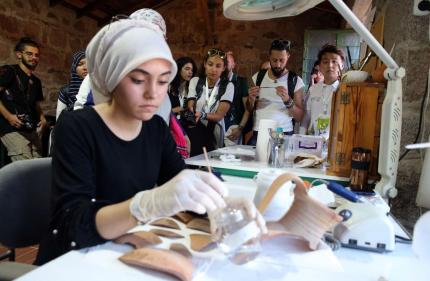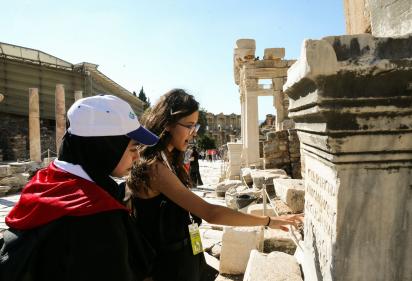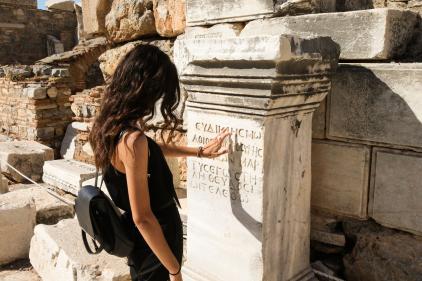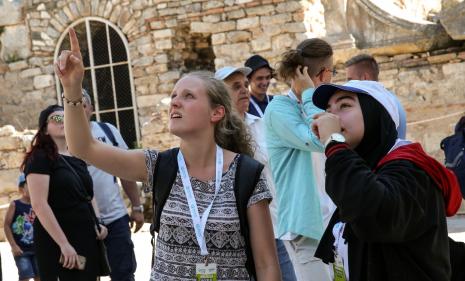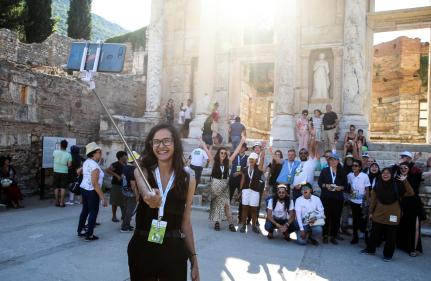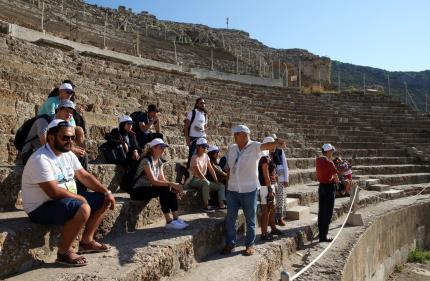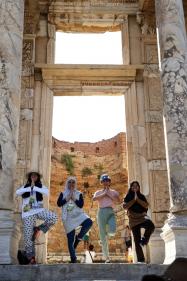Young Archaeologists Hunt for Ancient History
The Archaeology Summer School participants have visited ancient cities of Ephesus and Assos.
In the ancient city of Ephesus in İzmir, one of UNESCO World Heritage Sites, and one of the most importance hubs in the ancient period, the participants have had a chance to examine closely the historical finds and excavation sites in an atmosphere rife with history. The participants had a chance to see the Temple of Artemis, one of the Seven Wonders of the Ancient World, and they were fascinated to see and learn how the Library of Celsus, one of the most visited places in the ancient city, had been built and how it was designed.
Regarding the trip to Ephesus, one of the most importance hubs in the ancient period, Roman archaeologist Silviu Edmand Iulian Ene said: "I am impressed with the beauty of the city as I stepped in. I am a Roman archaeologist specialized in classical archaeology, and visiting this place has always had a special place in my life. I have eventually managed to see one of the most important cities of the ancient world and I am grateful to Yunus Emre Institute for this. We entered the city through the Gate of Magnesia. First, we visited Odeon, which was a good experience for me. Seeing the beautiful Memnius Monument, we headed for the living Library of Celsus. It is the most famous building in the entire city. For me, visiting here was a dream come true. When I stood in its shade, I tried to visualize how people lived there 2000 years ago. Then, we saw the huge amphitheater, used in the Roman era. Its sheer size was impressive. Then, we walked along the harbor street and ended our historical voyage at the north gate for new adventures."
Assos: the city of philosophy and Aristotle
The next destination for the young archaeologists attending the Archaeology Summer School was the ancient city of Assos, a meeting place for sea and cultural tourism.
Assos welcomed the participants with its tranquil atmosphere and captivating scenery, and Dr. Veysel Tolun, from Çanakkale Onsekiz Mart University, accompanied the participants as they discovered very part of the city and listened to the mythological stories about it.
After a long walk, the participants met the archaeologists at the excavation house, where they were briefed about the processes in an excavation house and how the finds were examined. The participants received information on the restoration and conservation of the finds during the excavations and talked about their experiences.
Lamya El Mobayed, a participant who came from Lebanon, expressed her feelings as follows:
"It is unbelievable to hear the buzzing sounds at souvenirs shops and imagine that you would go right into the 6th century when you head for that door beneath the hill. If you want to know how one feels standing at the top of the world, you can try climbing while looking at the Aegean Sea and enjoy the moment."
The participants will resume their archaeological discoveries with trips to Gaziantep, Şanlıurfa, Ankara, Çorum and Istanbul.



